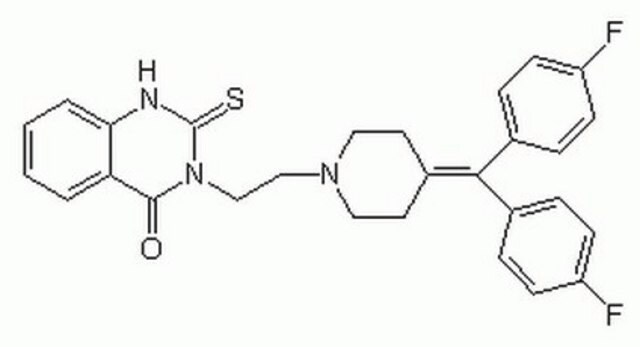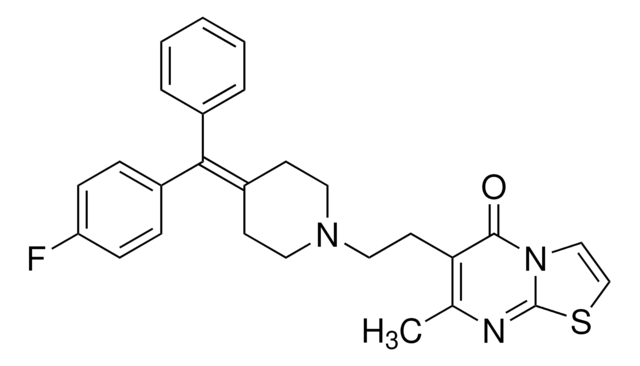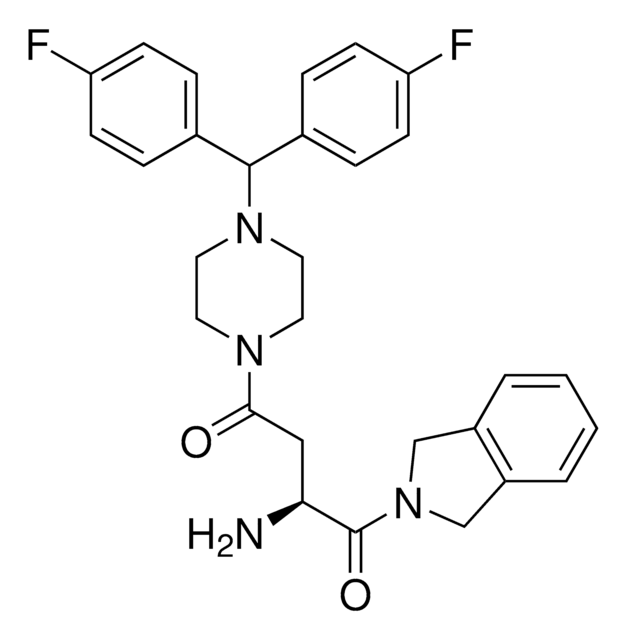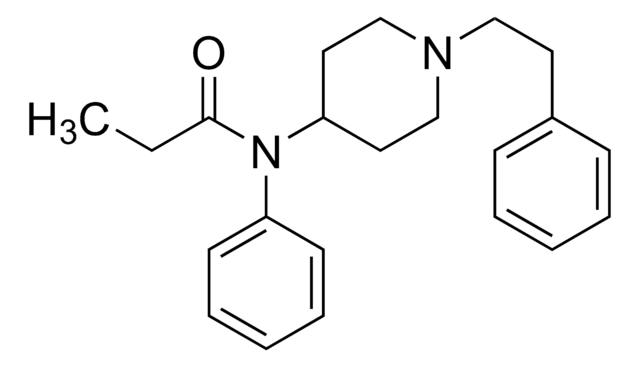D5794
Diacylglycerol Kinase Inhibitor II
solid
Synonym(s):
3-[2-[4-(bis(4-Fluorophenyl)methylene)-1-piperidinyl]ethyl]-2,3-dihydro-2-thioxo-4(1H)-quinazolinone, R59949
About This Item
Recommended Products
biological source
synthetic (organic)
Assay
≥97% (HPLC)
form
solid
color
pale yellow
mp
228-230 °C
solubility
0.1 M HCl: slightly soluble
0.1 M NaOH: slightly soluble
DMSO: soluble
H2O: insoluble
ethanol: soluble
ethyl acetate: soluble
storage temp.
−20°C
SMILES string
Fc1ccc(cc1)\C(=C2\CCN(CCN3C(=S)Nc4ccccc4C3=O)CC2)c5ccc(F)cc5
InChI
1S/C28H25F2N3OS/c29-22-9-5-19(6-10-22)26(20-7-11-23(30)12-8-20)21-13-15-32(16-14-21)17-18-33-27(34)24-3-1-2-4-25(24)31-28(33)35/h1-12H,13-18H2,(H,31,35)
InChI key
ZCNBZFRECRPCKU-UHFFFAOYSA-N
Related Categories
Application
Biochem/physiol Actions
Features and Benefits
Storage Class Code
11 - Combustible Solids
WGK
WGK 3
Personal Protective Equipment
Choose from one of the most recent versions:
Already Own This Product?
Find documentation for the products that you have recently purchased in the Document Library.
Our team of scientists has experience in all areas of research including Life Science, Material Science, Chemical Synthesis, Chromatography, Analytical and many others.
Contact Technical Service







